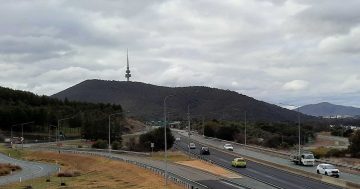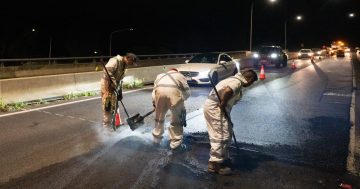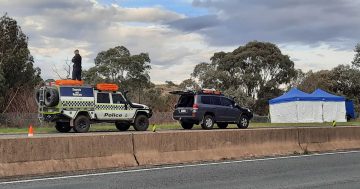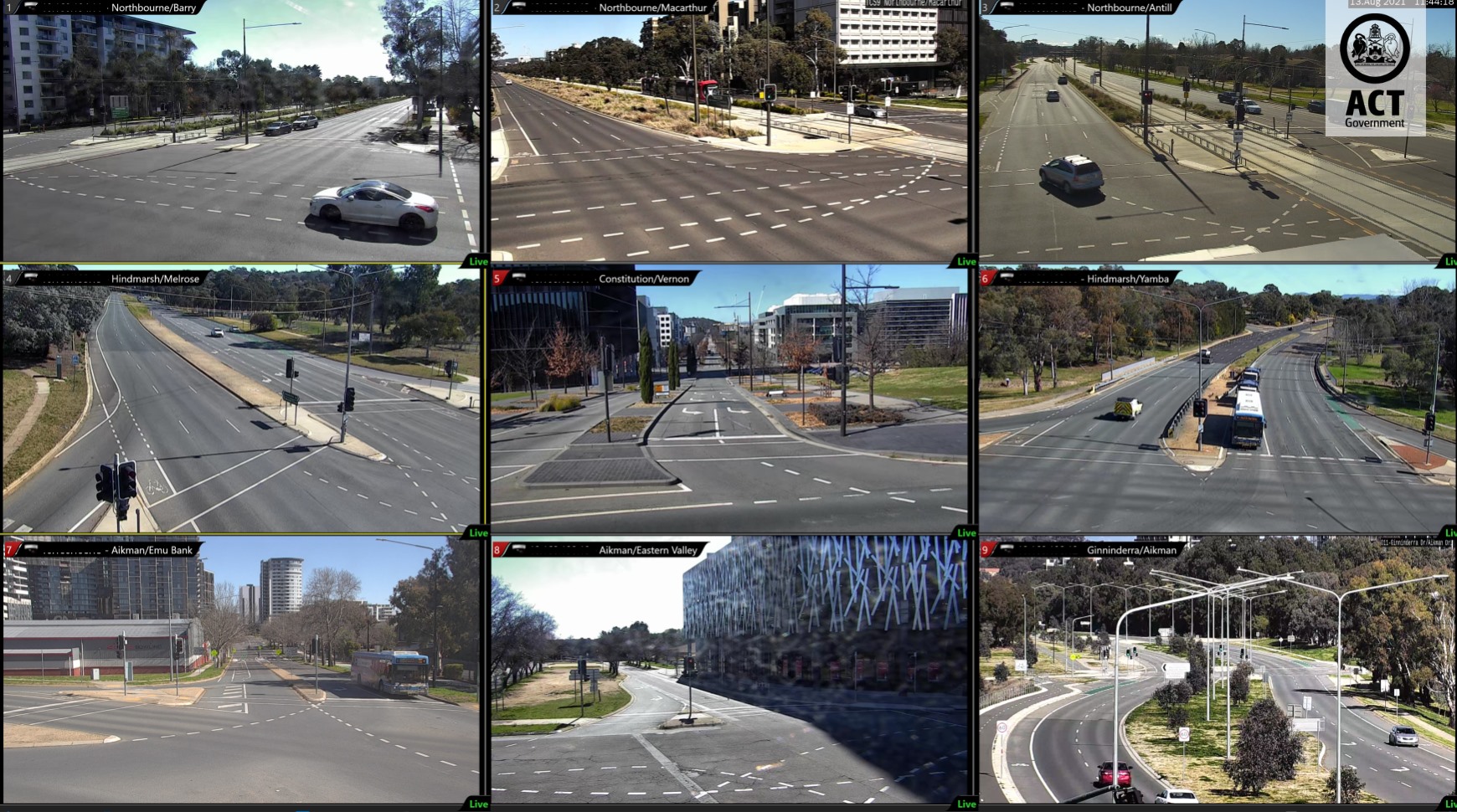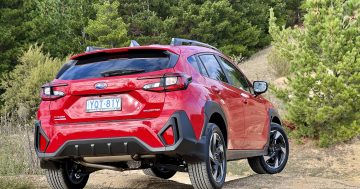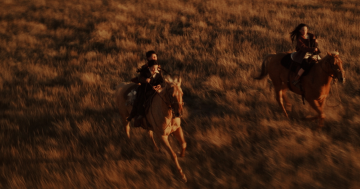
The Tuggeranong Parkway near the Arboretum. Photo: George Tsotsos.
Driving home the other night came the now familiar traffic report of chaos on the Tuggeranong Parkway after a peak-hour pileup near the Arboretum.
A four-car crash between the Arboretum and Glenloch Interchange had turned the Parkway into a car park, with northbound traffic backed up to Hindmarsh Drive. Avoid the Parkway and find an alternative route if you can, drivers were advised.
It’s a scenario that’s been repeated again and again this year morning and night, and the culprit is generally that same stretch of road where traffic merges and Belconnen-bound vehicles look to veer left.
It’s got to the point where the reliability of the parkway at certain times of the day is being seriously questioned.
Off to the city one night for a concert date, I was just about to turn of the Cotter on to the Parkway when I noticed the queue of cars and kept going. A trail of concert-goers straggled in late after the first performance, victims of the Parkway car trap.
The same thing happened to Raiders fans going to a Friday night game at Bruce.
These days if I have to be somewhere by a certain time, I’ll avoid the Parkway like the plague.
If you are going to Canberra Stadium, a city date or the airport to catch a plane, taking the Parkway can be a risky business.
So what’s going on?
Roads ACT and the Minister has been approached but to date, no answers have been forthcoming.
The Emergency Services Agency says ACT Fire & Rescue has attended 13 motor vehicle incidents on the Tuggeranong Parkway between the Glenloch Interchange and the Cotter Road since the beginning of the year and 23 August. Three of these were located near the Arboretum intersection.
But the number of actual accidents must be a lot more.
It seems only a minor bingle can bring the Parkway to a standstill because there is no where to go once cars collide.
Other arterials such as Adelaide Avenue have median strips that offer some space to clear cars and debris but the Parkway, particularly at that crunch point near the Arboretum, is tarmac and concrete.
It poses the question whether there are design flaws in the road or whether something could be done to make it safer to merge and veer.
It could also mean Canberra drivers are just rubbish at both.
Whatever, the Parkway seems seriously compromised as a reliable thoroughfare to the north, the city, and the airport.
If nothing else, Roads ACT should be looking at what could be done to make it safer and more reliable.
Have you been caught in the Tuggeranong Parkway car trap? What do you think could be done to make it less vulnerable to accidents?












